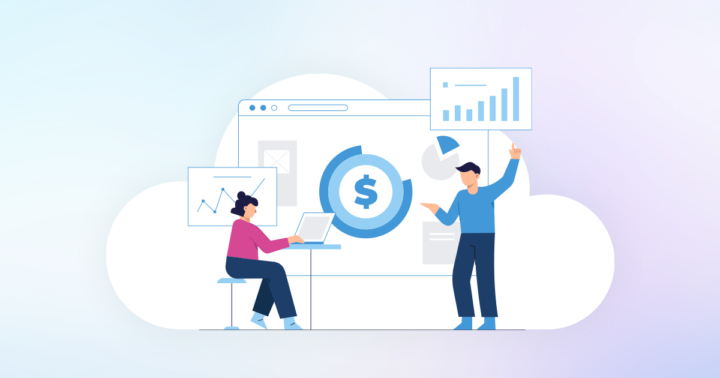 As businesses increasingly adopt cloud services to enhance flexibility and scalability, managing and optimizing cloud costs has become a crucial aspect of cloud strategy. Effective cloud cost optimization ensures organizations maximize their return on investment (ROI) while maintaining optimal performance and efficiency. This blog will explore key strategies and best practices for cloud cost optimization, helping your business make the most of its cloud investments.
As businesses increasingly adopt cloud services to enhance flexibility and scalability, managing and optimizing cloud costs has become a crucial aspect of cloud strategy. Effective cloud cost optimization ensures organizations maximize their return on investment (ROI) while maintaining optimal performance and efficiency. This blog will explore key strategies and best practices for cloud cost optimization, helping your business make the most of its cloud investments.
1. Automate Workload Scheduling
Stop Non-Production Environments: Stopping development, testing, and QA environments outside of core work hours can lead to substantial cost savings. Organizations can save 60-66% on cloud costs by turning off these environments on nights and weekends.
AWS Instance Scheduler: AWS provides tools like the AWS Instance Scheduler, which allows you to define custom start and stop schedules for your Amazon EC2 and Amazon RDS instances. You can set up recurring schedules to automatically start and stop instances based on your business hours.
2. Identify Cost Anomalies
Detection: Leverage advanced cloud cost intelligence tools to monitor and analyze spending patterns continuously. These tools can automatically detect deviations from expected usage and alert administrators to potential anomalies.
Investigation: Investigate the root causes of anomalies by examining recent changes in resource configurations, application behaviours, and usage patterns.
Detailed Analysis: Perform a detailed analysis of detected anomalies to understand the underlying causes.
Historical Data: Review historical data to identify recurring patterns or events that may have contributed to the anomalies.
Long-Term Solutions: Develop long-term solutions to address the root causes and prevent future anomalies, such as optimizing resource configurations, updating policies, or implementing automated controls.
3. Effective Storage Management
Data Assessment: Conduct a thorough assessment of your data storage requirements. Understand the nature of the data, access frequency, and retention policies.
Usage Patterns: Analyze storage usage patterns to identify high-use and low-use data, as well as data that can be archived.
Forecasting: Project future storage needs based on current trends and anticipated business growth to avoid over-provisioning.
Cost Comparison: Compare costs across storage types and classes to identify the most cost-effective options for different data sets.
GP3 Volumes: Migrate to general-purpose SSD (GP3) volumes, which offer a balance of performance and cost efficiency. The benefits are as follows:
- Cost Efficiency: GP3 volumes provide lower costs than GP2 volumes while delivering similar performance levels.
- Scalability: GP3 volumes allow independent scaling of IOPS and throughput, providing flexibility to meet changing performance requirements without incurring additional costs.
4. Leverage AWS Discounts
Reserved Instances (RIs): Commit to using specific AWS resources for one or three years to receive significant discounts compared to On-Demand pricing.
- Standard RIs: Offer the highest discount but have limited flexibility regarding instance family, operating system, and tenancy.
- Convertible RIs: Provide lower discounts but allow for more flexibility in changing instance attributes.
Savings Plans: Commit to a specific amount of usage, measured in $/hour, for a one or three-year period, and apply the discount to any eligible usage.
- Compute Savings Plans: Apply to any compute service, offering flexibility and up to 66% savings.
- EC2 Instance Savings Plans: Apply to a specific instance family within a region, providing up to 72% savings.
5. Utilize Spot Instances
Spot Instances offer an excellent opportunity for significant cloud cost savings by allowing organizations to purchase spare AWS capacity at a substantial discount compared to On-Demand pricing. Here’s how you can utilize it:
Termination Notices: AWS provides a two-minute warning before terminating Spot Instances, allowing applications to handle the interruption gracefully.
- Graceful Shutdown: Use the two-minute notice to save state, complete current transactions, and gracefully shut down processes.
- Spot Instance Draining: Integrate Spot Instance draining mechanisms in your applications to ensure smooth handling of instance terminations.
Architecting for Fault Tolerance: Design applications to be fault-tolerant and resilient to interruptions.
- Stateless Applications: Build applications that do not rely on the local state, making it easier to recover from instance terminations.
- Distributed Systems: Use distributed computing models to spread the workload across multiple instances. This minimizes the impact of losing any single instance.
- Auto-Scaling Groups: Incorporate Spot Instances into auto-scaling groups to replace terminated instances with new ones.
Diversified Workloads: Spread workloads across different instance types and availability zones to reduce the risk of simultaneous terminations.
- Instance Type Flexibility: Utilize various instance types to increase the likelihood of obtaining Spot capacity.
- Multi-AZ Deployment: Deploy applications across multiple availability zones to ensure availability even if Spot capacity in one zone is reclaimed.
Conclusion
Cloud cost optimization is an ongoing process that requires continuous monitoring, analysis, and adjustment. By implementing these key strategies and best practices, your organization can achieve significant cost savings while maintaining optimal performance and efficiency in your cloud environment. A comprehensive approach to cloud cost optimization enhances your financial management and maximises the value of your cloud investments.
For more insights and expert guidance on cloud cost optimization, partner with CloudKeeper, which specializes in cloud cost management and optimization strategies. You can unlock your cloud infrastructure’s full potential while controlling costs.


















